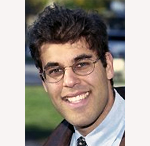The Sauk Prairie River Arts Festival is an annual multi-media, multi-location event centered on the River Arts Center in Prairie du Sac. Vintage America is the theme this year and the focus of the visual art, historical exhibits, lectures, reenactments and tours is the “greatest generation” of the Great Depression and World War II era.
 As a volunteer with the Badger History Group, I participate in the River Arts fest as a guide on bus tours of the Badger Army Ammunition Plant. Few places in Wisconsin are better suited to present the impact of World War II than the “powder plant” first constructed by the U.S. Army on ten thousand acres of the Sauk Prairie in 1942. The impact of the plant, however, extends well beyond the 1940s and that decade’s war.
As a volunteer with the Badger History Group, I participate in the River Arts fest as a guide on bus tours of the Badger Army Ammunition Plant. Few places in Wisconsin are better suited to present the impact of World War II than the “powder plant” first constructed by the U.S. Army on ten thousand acres of the Sauk Prairie in 1942. The impact of the plant, however, extends well beyond the 1940s and that decade’s war.
Badger produced smokeless propellant, the high explosive that ignites inside the barrel of a rifle, machine gun or artillery piece to send a slug or another explosive charge on its way to a target. Badger also produced rocket propellant, the solid fuel that pushes a missile on its course, and “ball powder” the specialized propellant fired by the M-16 automatic rifle–standard issue for the U.S. Army introduced for Vietnam and still in use today in Afghanistan and Iraq.
Badger operated for a few years during World War II and the Korean War, and for a decade during the Vietnam War. In the intervening years and after 1975, Badger remained on standby as part of the American Cold War arsenal. In wake of the so-called peace dividend earned after the demise of the Soviet Union, the Army decommissioned the plant in 1998 and began the slow and deliberate process of withdrawal.
In the years since, much of the plant–fourteen hundred structures, thousands of pieces of equipment, hundreds of miles of piping, a small town’s worth of utility lines and roadways–has been dismantled, scrapped, decontaminated and demolished. This deconstruction presents a challenge to the tour bus guide who must explain that the pile of shredded lumber outside the window, the mound of smashed concrete, or the row upon row of naked concrete footings in the grass, were once key components of the “arsenal of democracy” that defeated the Nazis and contained the Communists.
On the bus at Badger, I share the dilemma faced by tour guides at Stonehenge, the Roman Forum, and a Mayan city in Guatemala. How do we bridge the gap between what was and the remnant that remains?
The gap closes near the end of the Badger tour as we enter the ball powder manufacturing area. Dozens of buildings, stenciled identification signs still readable, line the road. Lengths of pipe, utility poles and wires, railroad tracks and tram lines still stand as visual aids to the script.
I am able to point to this industrial cluster and say, “here is the arsenal of the United States for the Vietnam war.” By the widest of measures, more of the ammunition fired by American troops in Vietnam was produced here than anywhere else. The rifle rounds sprayed into the jungle by soldiers firing M-16 automatics, the mortar shells aimed at Viet Cong bunkers, the rockets roaring out from pods mounted on helicopter gunships, were powered by explosives made here, at this spot, in that building, just outside the window of the bus. The tourists crane their necks, stand at their seats, aim cameras for their first careful photos. The gap disappears between what was and what remains.
When we think of the United States in the Vietnam years, the images–often as manufactured as the term “greatest generation”–that we see are of long-haired student demonstrators, defiant war resisters and demoralized veterans. That is the home front of incomplete memory.
That home front memory is completed at the Badger powder plant, where the gap is bridged between what was and what remains of the arsenal of the United States during the war in Vietnam.
–Michael Goc



 Posted by Tina - Martina
Posted by Tina - Martina 


 As a volunteer with the
As a volunteer with the 